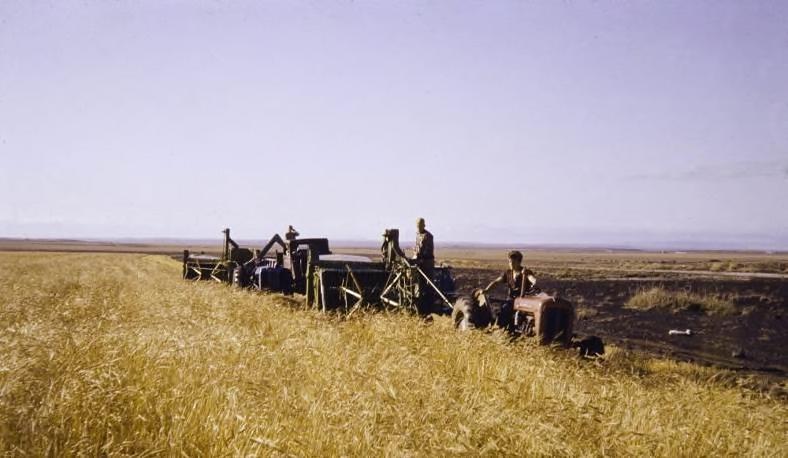
2 minute read
Background and early history
Iceland was settled in the late 9th century by a population immigrating from Scandinavia, the northern British Isles, Scotland and Ireland. Most of the settlers were farmers and their families. They brought with them seeds of small grains, primarily barley, from their former farms and planted them in Iceland. This is frequently reported in the Icelandic Sagas. Today, there are many names of farms and other place names which relate to grains – korn – in Icelandic, as in many other Germanic languages, and to grain fields – akur or akrar – in Icelandic. Grain growing was widely practiced in Scandinavia and the British Isles at the time of the settlement of Iceland. However, the highest summer temperatures in Iceland were about 4°C lower than in the countries of the settlers´ origin. Thus, the grain from the seeds they took with them did not develop as well in Iceland as on their farms in the old country, nor did they give anywhere near the harvest they would have expected. They must certainly have been disappointed with the performance of these seeds and the size of the harvest. Finding home grown barley seeds for planting must have been difficult as grain grown in Iceland rarely reached sufficient degree of maturity to allow them to produce seeds which germinated and developed into a new crop. Accounts in the Icelandic Sagas indicate that grain, almost exclusively barley, continued to be grown until the 14th century. Grain production gradually decreased, most likely because of deteriorating climate making viable seeds unavailable for reseeding grain fields and general poor performance of barley, even if seed grain may have been secured from overseas (Jónatan Hermannsson, 1993). No grain varieties from this period exist now. The old primitive varieties of barley, Tampar and Sigur from the Faroe Islands, may be the closest relatives of the barley varieties cultivated in the first half millennium after Iceland was Figure 1. Klemenz Kr. Kristjansson and Jan d´Fontaine in barley settled. These varieties are still field at Hvolsvellir 1962. grown experimentally in Iceland and have provided genetic material for the highly successful barley breeding programme carried out since 1990 and led by Jónatan Hermannsson. They are being maintained by the Nordic Genetic Resource Centre. Archaeological studies made by Sturla Fridriksson have revealed well developed barley grains in Iceland from the 11th century. Other discoveries of barley grains from the 14th century show poorly ripened seeds. In the mid-18th
Figure 2. Björn Sigurbjörnsson inspecting a barley trial on sand at Gunnarsholt in 1963.








